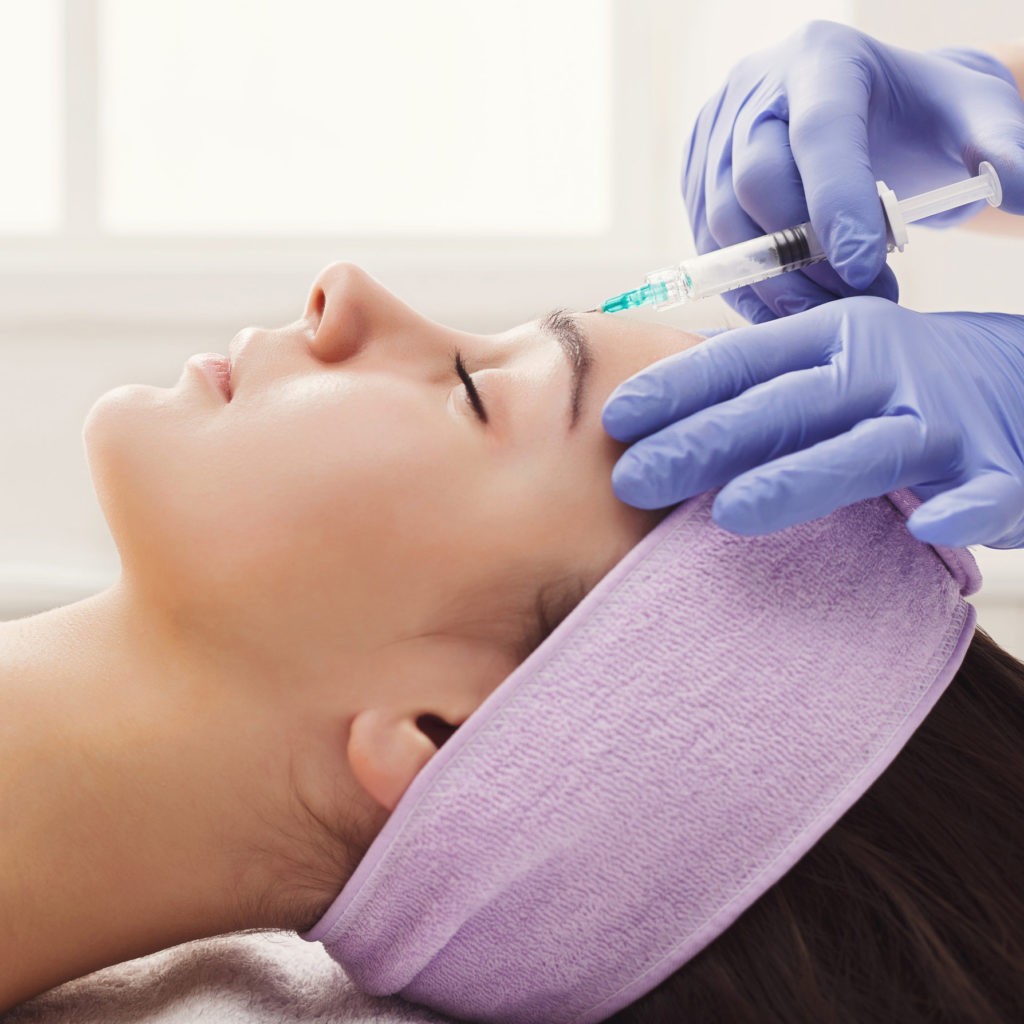Botox is considered one of the most common cosmetic procedures in the world. Millions are
injected annually with Botox; for both cosmetic and non-cosmetic therapeutic purposes. This substance has been used for more than 30 years to treat movement disorders, nerve diseases that are characterized by excessive muscle activity as well as strabismus problems. Soon after, Botox has become a staple in the world of non-surgical cosmetology.
What is Botox? What are its benefits and medical uses? Does it have side effects?
What is Botox?
Botox is a natural protein substance extracted from a type of bacteria called Clostridium
Botulinum. These bacteria normally cause food poisoning; giving this substance its name
Botulinum Toxin.
This protein substance has the ability to relax the muscle that you inject it with, as it prevents
some nerve chemical signals that work to contract the muscles from functioning. Although
considered toxic, it is after purification and treatment in private laboratories that this substance
constitutes an important treatment, not only in the world of cosmetics but in many other medical fields.
What are the uses of Botox in cosmetics?
The most common use of Botox in the world of non-surgical cosmetology is the treatment of
expressive wrinkles on the face and neck, especially wrinkles between the eyebrows, on the
forehead and around the eyes. It can also be used to treat longitudinal wrinkles in the neck,
known as the Nefertiti technology. Moreover, Botox can help treat the gummy smile as well as
Bruxism.
What are other medical uses for Botox?
In the field of dermatology, Botox can be used to treat cases of hyperhidrosis or excessive sweating that can occur in the armpits, hands and sometimes feet. It does so by working to stop the effect of nerve signals to sweat glands, which addresses the problem organically. In addition to that, the patient is relieved of the social embarrassment that this problem often imposes.
Migraine treatment
The injection of Botox is one of the solutions for the treatment of chronic migraine. Patients who have migraine attacks frequently (more than 15 days a month), the ones whose headaches last more than 4 hours as well as those who have an aura of spontaneous facial muscle contractions prior to the attack, obtain the greatest benefits from this treatment.
Other uses of Botox
Cervical dystonia is defined as a condition in which involuntary contraction of the neck muscles occurs, causing sudden, involuntary spraining, which in turn causes painful spasms. Therefore, Botox injections is able to treat this condition by targeting and relaxing these muscles.
Botox is also used in ophthalmology, as it helps in treating cases of strabismus or ‘lazy eye’
that occur as a result of the imbalance between the contraction of the different eye muscles.
It also contributes to the treatment of patients who have overactive urinary bladders, and thus the treatment of the resulting Overactive Bladder Dysfunction.
Recent studies have also shown that Botox treatment helps improve the patient’s
psychological state and is indicated for the treatment of depression and social anxiety.
When will the results of Botox injections appear?
The results start to appear within a few days after the injection, and the effect of Botox
persists for a period of 3-6 months. To maintain the results, it is preferred to repeat the treatment session once this period is over.
Who can not undergo Botox treatment?
Despite the safety and effectiveness of Botox, there are people for whom Botox is not
recommended, such as pregnant women and people with muscle and autoimmune diseases.
What are the risks or complications of Botox injection?
Botox is considered relatively safe as it has been FDA-approved for many years now. However,
treatment must only be done by a specialist doctor to avoid complications or risks that
may occur in unprofessional hands. After Botox injection sessions, slight swelling, or bruising at the site of injection may occur. This is not worrying and disappears within several days.
It is worth noting that if Botox injections are performed by unprofessional hands, there are many possible side effects. These include a drooping eyelid, eyebrow distortion, asymmetry of the face, especially in the smile. In severe cases, it may lead to weakness of the eye muscles
and problems with vision.
Is it safe to use Botox?
Numerous clinical trials in the field of cosmetology, as well as many years of clinical practice in
the neurology field, have fully demonstrated the safety of Botox use. In addition to that, several
scientific publications have repeatedly confirmed the high level of safety of Botox injections.
This all makes Botox an excellent treatment option when used in the right hands and by a professional with a high level of expertise.
Using the appropriate dose, an experienced professional and the maintenance of 3-6 month intervals between sessions, the treatment can be safely and effectively repeated for several years.

